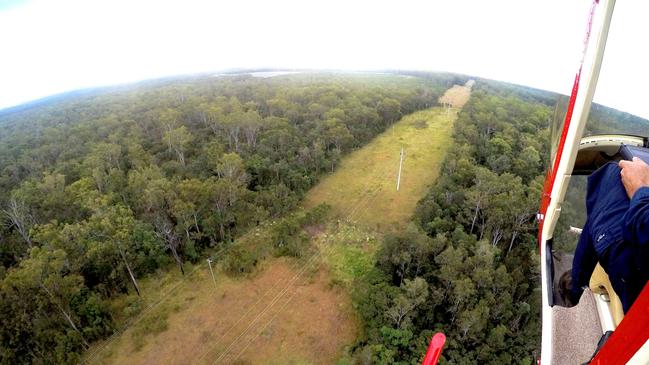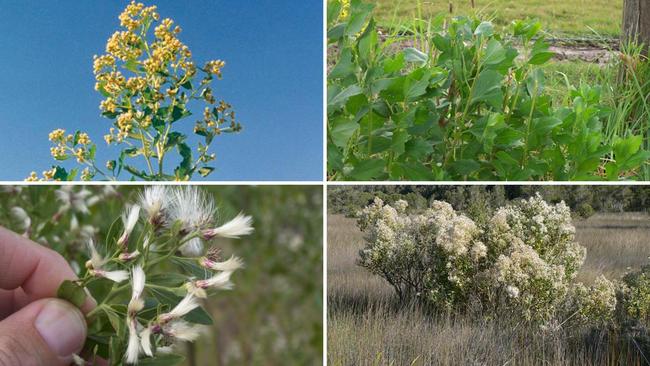Clarence council takes to sky in heclicopter operation to help stamp out invasive weeds choking rural properties
Property owners in northern NSW have been given a leg up on identifying troublesome invasive weeds thanks to a helicopter operation highlighting nasty outbreaks.

Regional News
Don't miss out on the headlines from Regional News. Followed categories will be added to My News.
Rural property owners in part of northern NSW have been given a leg up on identifying problem weeds thanks to a helicopter flyover highlighting nasty outbreaks in hard to reach locations.
More than 1000 properties have been assessed for weeds in a helicopter operation spanning just one day – and more than 70 properties were identified as being choked by weeds such as tropical soda apple, groundsel bush and Mysore thorn.

Outbreaks were mapped across the Clarence Valley in the Clarence Valley Council operation, significantly cutting down on the time it would take to track down the weeds on the ground.
Flights covered Wooli to Yamba to Iluka and Maclean, northwest out to the border with Kyogle Shire and back through Fineflower to Grafton, and southwest to Glenreagh, Nymboida and Blaxland Flats.
Landholders will be notified and urged to roll out control measures before infestations spread.
It’s hoped the use of herbicides will be reduced by speedy action to get on top of the weeds.

One of the main weeds in the spotlight has been tropical soda apple, which is a prickly shrub with white flowers and yellow fruit.
The plant spreads quickly and forms dense thickets that quickly outcompete pastures, native plants and even restrict livestock movement, blocking shade and water
Sharp prickles injure people and animals and the weed can be poisonous if eaten in large quantities. Additionally, it hosts many crop pests, including viruses, fungi and insects, proving especially devastating to tomatoes, potatoes and capsicum production.
Another target of the operation is groundsel bush, which is a dense and woody shrub with white to yellowish flowers. It invades pastures, plantations, wetlands and forests.
The poisonous weed, which triggers allergies in people, has similar impacts to tropical soda apple – it outcompetes native plants and pasture and impedes access to shelter and food for animals.
Mysore thorn, commonly known as the ‘wait-a-while’, is a prickly shrub which aggressively forms dense thickets.

It invades creek banks, roadsides, pastures and bushland, among other areas. It was originally a hedge plant, but is now an environmental catastrophe.
Dense thickets smother native species, provide a refuge for feral dogs and inhibits access to various areas.
For help identifying problem weeds in NSW, visit the Department of Primary Industries Weedwise website, which includes more than 300 plant profiles. State, regional and general biosecurity duties under the Biosecurity Act 2015 are shown for each weed.
Got a news tip? Email catherine.piltz@news.com.au




